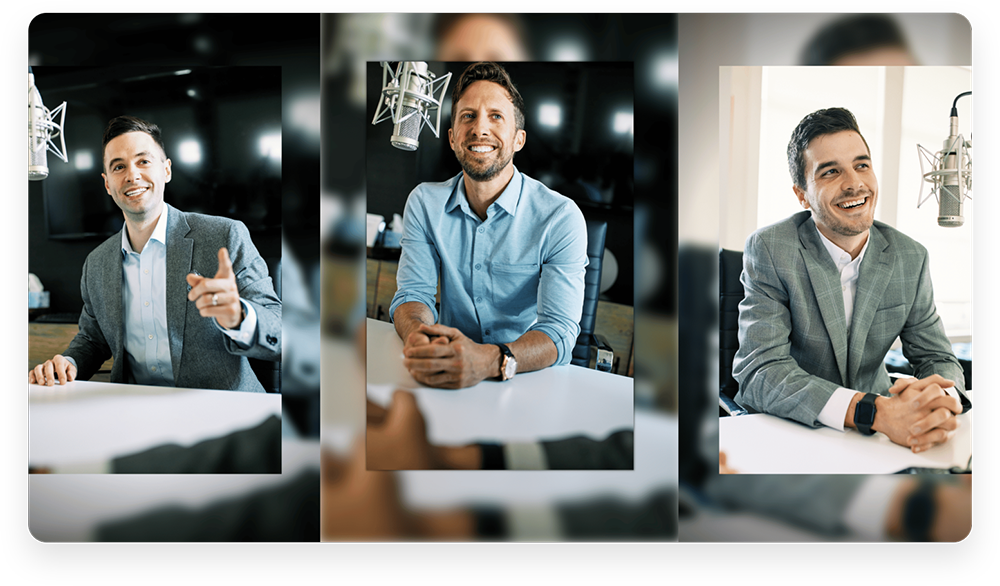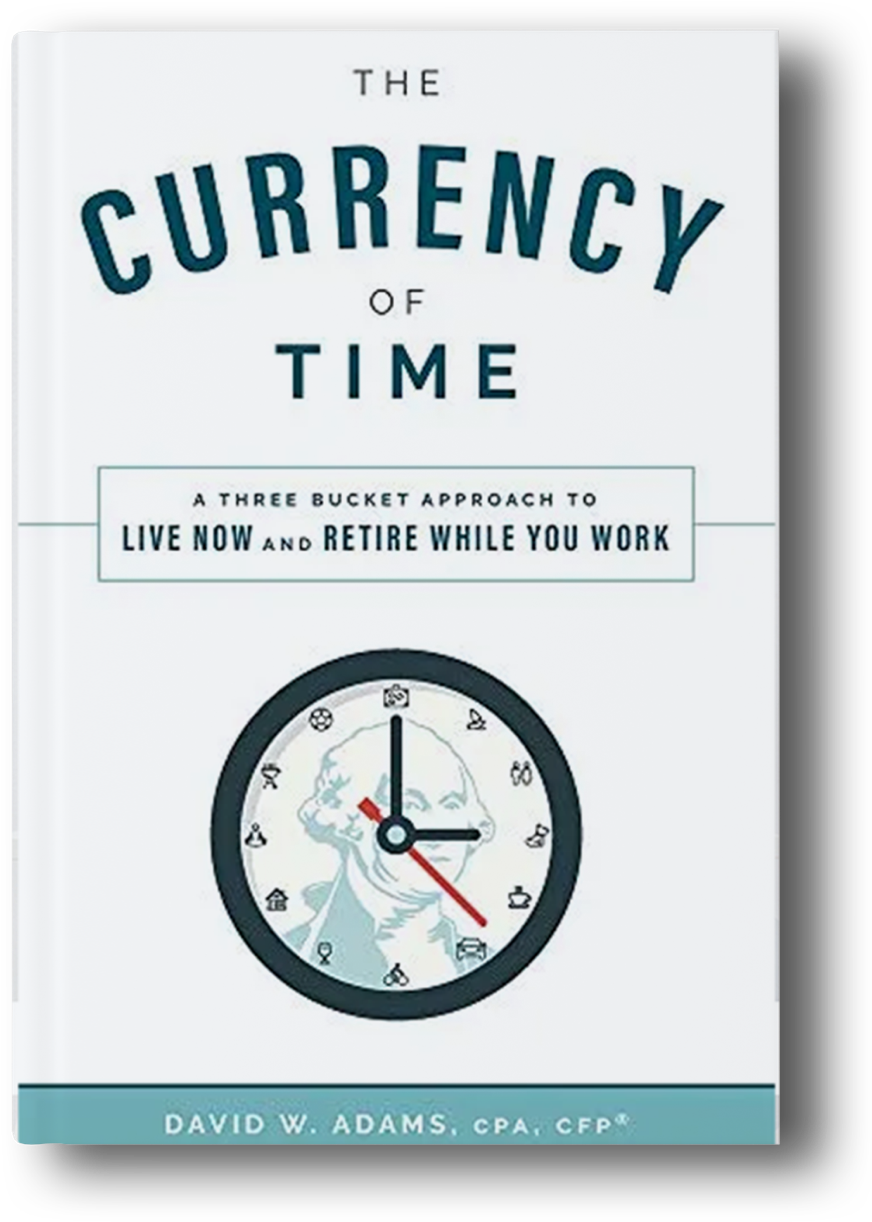Retire While You Work® Podcast
Join us as we discuss various topics to help you find the path to viewing money as a means to the true currency, TIME, and learn how to build more memories and experiences.
View All EpisodesJoin us as we discuss various topics to help you find the path to viewing money as a means to the true currency, TIME, and learn how to build more memories and experiences.
View All Episodes
What if you could do what you're passionate about and achieve a work-life balance? What if you were relieved of the pressure to have some massive amount saved?
Learn More
Based on the title, I hope you aren’t thinking, “here they go with the buckets again”. So stay with me, because that is exactly where we are headed! If you are a client of ours, you know that when we are planning with clients we are always talking about the three buckets. Over the years, we have found and received amazing feedback in regard to the buckets. As advisors we are often referring to the buckets in our own personal financial plans. Today, what I want to do is speak specifically to bucket #2, which we often refer to as the “middle bucket”. As a refresher, bucket #1 is the emergency fund or all cash that you have easy access to and bucket #3 are long term accounts, think retirement type accounts that you cant touch until you are 59.5 without taxes and penalty.
When we are planning with clients on their bucket 2, we always say to think of this as 3 to 5 year money. Money that you know you will not need access to or need to touch in the next couple of years – so we want this earning more than point nothing in the bank, like it is right now. Typically, the allocation on this is around 60/40 stocks to bonds. With the thought being, even if the market is down there always is 40% in bonds that we have easy access to – this also helps in most circumstances to never have to sell stocks while they are down. The only time we have ever seen a financial plan “go-wrong” was when the market was down and someone had all of their money in real estate or stocks, forcing them to sell to get cash and taking a loss. This is what happened to many in 2008 and 2009 during the financial crisis. Having an ample emergency fund and a portion of the investments in bonds, this should never happen.
So, what exactly is “part 2 of bucket 2”? Glad you asked! It can be a couple of different things. If a client has the right amount in an emergency fund and has funded their bucket #2 to the point where they have cash and bonds that could help them get by for 3-5 years assuming they had no income and the market was down, then its time to start looking at bucket 2 part 2. At its core it is still just an investment account either held individually or jointly by spouses that you would have full access to if you decided you wanted the cash back. But, because we know we don’t need this money within the next 5+ years we want to allocate it across more stocks than bonds in search of long term growth. This could be done through standard asset allocation, or through a more specific sector like technology that over the long-term as it continues to be adopted more we believe will see solid growth.
The other part of bucket 2 part 2 is real estate. I would estimate that about half of our client base holds some sort of real estate as an investment outside of their primary residence. Although real estate is not as liquid as an investment account. It does still need to be taken into consideration as part of the overall plan because it is building up equity and growing – sometimes even more so than the market – like we have seen in Nashville over the last 10+ years. And often times if it is an investment property you will be receiving income from this as well.
At times it can seem like building out a financial plan is never ending, but that doesn’t mean that it needs to be difficult. Which brings us back to the simplicity of the three buckets. Multiple times after meeting with prospects we have heard, “wow, I thought this would be much harder to map out”, which is why we continue to use the three buckets as the main planning technique with our clients. Whether you are just getting started saving with $5,000 or are looking to retire with $5,000,000 saved up, the three buckets can help to build out a financial plan for you that can help to achieve your goals and find financial peace through life’s many seasons.
As always, if there is anything we can do for you, or if you have any questions – do not hesitate to reach out!
Adams Wealth Partners, LLC is not a registered broker/dealer and is independent of Raymond James Financial Services. Investment advisory services offered through Raymond James Financial Services Advisors, Inc. Securities offered through Raymond James Financial Services, Inc., member FINRA / SIPC
Neither Raymond James Financial Services nor any Raymond James Financial Advisor renders advice on tax issues, these matters should be discussed with the appropriate professional.
Links are being provided for information purposes only. Raymond James is not affiliated with and does not endorse, authorize, or sponsor any of the listed websites or their respective sponsors. Raymond James is not responsible for the content of any website or the collection or use of information regarding any website's users and/or members.
The running stock ticker is not a recommendation to buy or sell stocks of the companies pictured.

Securities offered through Raymond James Financial Services, Inc., member FINRA/SIPC, marketed as Adams Wealth Partners. Investment advisory services offered through Raymond James Financial Services Advisors, Inc.Adams Wealth Partners is separately owned and operated and not independently registered as a broker-dealer or investment adviser.
Certified Financial Planner Board of Standards Inc. owns the certification marks CFP®, CERTIFIED FINANCIAL PLANNER™, CFP® (with plaque design) and CFP® (with flame design) in the U.S., which it awards to individuals who successfully complete CFP Board's initial and ongoing certification requirements. CFP® holders at Adams Wealth Partners, LLC are: David Adams, Myles Zueger, Carson Odom, and Spencer Provow
CPA holders at Adams Wealth Partners, LLC are: David Adams, Carson Odom, and Christine Kinsley
Please note that all archived content is for informational purposes only. Investment decisions should not be based on the content provided herein. For the most up-to- date statistical information and analysis, please contact your financial professional.

The 2024 Forbes ranking of America’s Top Wealth Management Teams Best-In-State, developed by SHOOK Research, is based on an algorithm of qualitative criteria, mostly gained through telephone and in-person due diligence interviews, and quantitative data. This ranking is based upon the period from 3/31/2022 to 3/31/2023 and was released on 01/09/2024. Advisor teams that are considered must have one advisor with a minimum of seven years of experience, have been in existence as a team for at least one year, have at least 5 team members, and have been nominated by their firm. The algorithm weights factors like revenue trends, assets under management, compliance records, industry experience and those that encompass best practices in their practices and approach to working with clients. Portfolio performance is not a criteria due to varying client objectives and lack of audited data. Out of approximately 10,100 team nominations, 4,100 advisor teams received the award based on thresholds. This ranking is not indicative of an advisor's future performance, is not an endorsement, and may not be representative of individual clients' experience. Neither Raymond James nor any of its Financial Advisors or RIA firms pay a fee in exchange for this award/rating. Raymond James is not affiliated with Forbes or Shook Research, LLC. Please see https://www.forbes.com/lists/wealth-management-teams-best-in-state/ for more info.
Barron’s Top 1,200 Financial Advisors 2023, is based on the period from 09/30/2021 - 09/30/2022 and was released on 03/15/2023. 5630 nominations were received and 1,200 won. Neither Raymond James nor any of its advisors pay a fee in exchange for this award. More:https://www.raymondjames.com/award-disclosures/#2023-barrons-top-1200
Please note that all archived content is for informational purposes only. Investment decisions should not be based on the content provided herein. For the most up-to- date statistical information and analysis, please contact your financial professional.
Raymond James is not affiliation and does not endorse the above-mentioned organizations.
Nashville Wealth Management & Financial Advisors | David Adams CPA, CFP® | Copyright © 2024 | Privacy Notice | Legal Disclosure| Disclaimers
